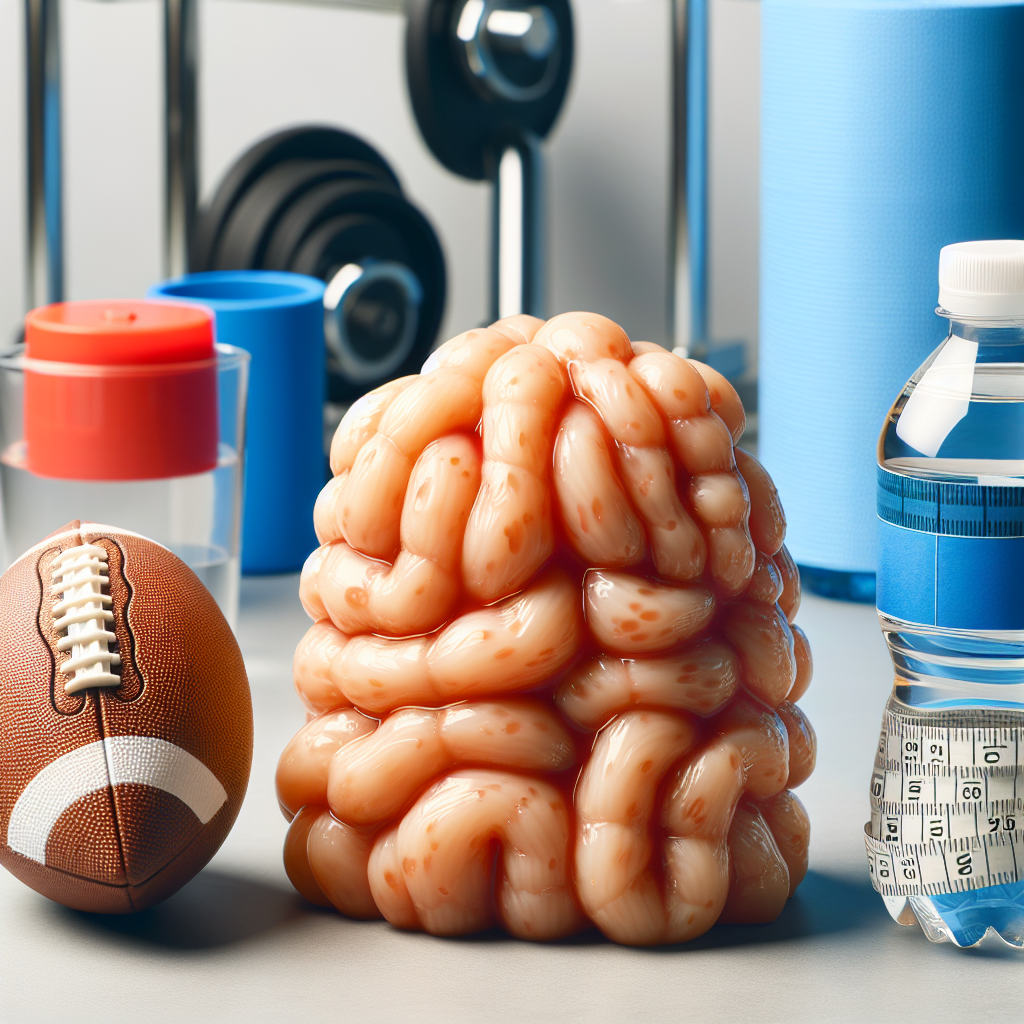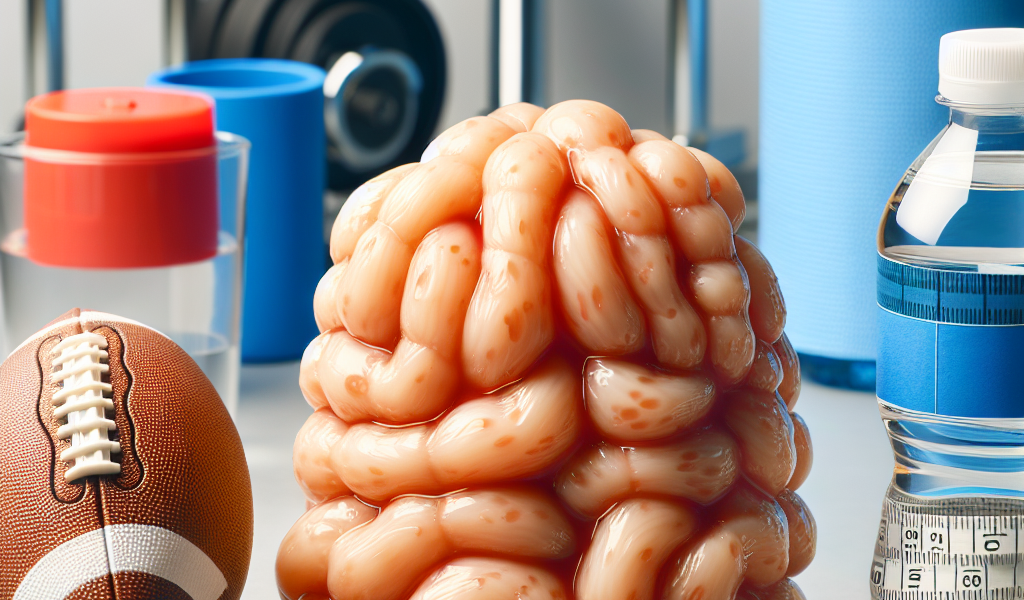The Astonishing Looks of What 20 Lbs of Fat Resemble
Lifting the veil on the astonishingly substantial volume of adipose tissue, this article reveals the visual representation of what 20 lbs of fat actually looks like. Readers will be able to grasp the concept of its physical scale, comprehend the differences and misconceptions enveloping essential, storage and total body fat, and understand the ripple effects of both its insufficiency and excess. Demystifying a myriad of body fat-related topics, from the role it plays in powerlifting to common misconceptions about what it means for the human physique, the article also touches on the contrasting appearances of different quantities of fat. Within these narratives, the piece provides insights into societal conversations and attitudes about physical transformation, as well as exploring healthier alternatives of dietary fats that can be incorporated into meal preparation.

Visualizing Fat: The Real Picture
When it comes to understanding fat and its implications on the body, it is important to acquire a clear and detailed understanding. Visualizing fat provides an explicit interpretation of what excess body weight entails, promoting healthy habits and overall well-being.
Understanding body fat
Body fat, also known as adipose tissue, plays several crucial roles in the body. They function as the body’s energy stores, provide insulation, and protect vital organs. To grasp body fat’s relative importance, one must consider that it’s not just about the quantity, but also the type and distribution.
Importance of body fat
Despite its negative stigma, body fat is an essential component of a healthy body. It plays a vital role in storing energy, absorbing shock, maintaining body temperature, and producing hormones. Nonetheless, it is essential to know that an excess or deficiency of body fat can lead to serious health consequences.
Healthy vs unhealthy body fat
Not all fats are created equal. Under the healthy status, body fat levels rely on factors such as, age, sex, and entire body composition. Women naturally have higher body fat levels than men to support reproduction and hormonal functions. On the other hand, unhealthy body fat is typically visible on the body and usually accumulates around the abdomen, which carries potential health risks like diabetes and heart disease.
Comparing Weight: Fat vs Muscle
The principle “pound for pound” holds in the context of weight, but not in terms of volume and body composition.
The difference in volume
Muscle and fat may weigh the same, but they differ significantly in volume. Research shows that muscle is dense and occupies less space than fat, leading to a more toned and lean appearance in individuals with high muscle mass.
Impact on body shape
Fat and muscle contribute differently to body shape. Higher fat levels lead to a larger, less defined shape due to fat’s nature of spreading out and occupying more space. In contrast, muscles provide a leaner and more defined shape because of their dense, compact composition.
Fitness and body composition
Fitness levels directly relate to body composition. An individual with a greater muscle mass compared to body fat is generally healthier and more physically fit. A high fat percentage can lead to an unfit body and potentially pose more significant health risks.
What 1 lb of Fat Looks Like
Representations of what a pound of fat looks like can be eye-opening, and understanding how fat forms in the body can be enlightening towards managing one’s weight.
How fat is made in the body
The body accumulates fat when it receives more energy than it needs to perform daily activities and metabolic processes. This excess energy is stored as body fat for later use.
Visual representation of 1 lb fat
A pound of fat roughly represents a small grapefruit’s size and has a soft, fluffy appearance which can spread evenly over a wide area or gather in specific areas over time.
How to effectively lose 1 lb of fat
To effectively lose one pound of fat, one needs to create a calorie deficit. Regular exercise, coupled with balanced nutrition, ensures a steady and healthy weight loss.
A Glimpse of 5 lb of Fat
The journey in fitness entails understanding the value of each pound gained or lost, more so when dealing with values such as five pounds of fat.
How 5 lbs of fat shows on body
Five pounds of fat exhibits a more noticeable change in the body’s size and shape. It is roughly the size of a loaf of bread and can alter body aesthetics considerably.
Ways to burn off 5 lbs
Burning off five pounds of fat involves creating a larger caloric deficit through a combination of diet and increased physical activity. It is achievable with the right amount of discipline, commitment, and plan.
Fitness journey from fit to fat to fit
While some individuals achieve and maintain their fitness goals, others oscillate—going from fit to fat, then back to fit. Their stories of transformation provide valuable insights into the consequences of unhealthy eating and a sedentary lifestyle.
Understanding 20 lb of Body Fat
Twenty pounds of fat significantly impact body aesthetics and overall health.
What 20 pounds of fat look like
Twenty pounds of fat resemble a large sack of potatoes. The body mass is quite obvious visually and can actively affect movement and comfort.
How losing 20 lbs can affect health
Losing 20 pounds can lead to significant improvements in health, such as better joint mobility, reduced risk of chronic diseases, enhanced cardiovascular health, and increased energy levels.
Tips for shedding 20 lbs of fat
Effective ways to shed twenty pounds of fat involve maintaining low-calorie intake, increasing physical activity levels, and staying consistent. The journey may be long but realizing the task reduces it to sizeable daily goals that lead to the ultimate achievement.
In-Depth: 30 lb and 40 lb of Body Fat
Understanding what significant amounts of fat like thirty and forty pounds look like can be revealing.
The impact of 30-40 lbs on health
Carrying 30-40 pounds of excessive body fat poses significant health risks, including chronic illnesses, cardiovascular disease, and heightened strain on the body’s mechanical structure, impacting mobility.
How 30-40 lbs changes body aesthetics
This volume of fat can change a person’s body drastically, making them larger and increasing their body mass index (BMI) significantly.
Ways to cut down 30-40 lbs
Losing such a considerable amount of weight requires a finely tuned strategy involving medical supervision, a nutritionist-designed diet plan, and an appropriate exercise regimen.
The Huge Difference: 100 lb of Fat
A three-digit value representing fat in the body poses significant health risks.
Visualizing 100 lbs of body fat
One hundred pounds of fat is typically spread across the body, making the individual appear highly overweight or obese. This amount of fat drastically alters an individual’s physical appearance.
The health risks associated with 100 lbs of fat
Carrying an extra 100 pounds of fat can put immense strain on the body, leading to severe health issues like diabetes, hypertension, heart diseases, and stroke, posing threats to one’s life span.
Successful stories of losing 100 lbs
Many individuals have successfully shed 100 pounds or more. Their stories often involve a life-changing decision involving a complete overhaul of lifestyle, diet, and the inclusion of regular exercise, significantly improving their health and extending their life expectancy.
The Types of Body Fat
In the context of body fat, understanding the differentiation between good and bad fats is crucial.
Understanding essential and storage body fat
Essential body fat is necessary for normal physiological functioning, playing a vital role in hormone regulation, while storage fat is the excess body fat accumulated as energy stores for later use. Too much storage fat can lead to obesity-related health issues.
Distinguishing between good and bad fats
Good fats, like monounsaturated and polyunsaturated fatty acids, are essential for overall health. Bad fats, like trans fats and certain saturated fats, can increase cholesterol levels and escalate heart disease risk.
Effects of too little or too much fat
Too little body fat can lead to deficiencies and potential health risks like hormonal imbalances and reduced brain function. Conversely, too much body fat leads to obesity and associated chronic health conditions.
The Myths and Facts Surrounding Body Fat
The topic of body fat is rife with myths and misconceptions. Shredding them can provide a better understanding.
Common misconceptions about body fat
Common misconceptions about body fat include the notion that all fats are detrimental to health and that thin individuals don’t have to worry about their fat levels. However, not all body fats are bad, and even thin individuals can have unhealthy levels of certain types of fat.
Debunking fat-related myths
Scientific research and evidence debunk these myths. Visceral fat, a form of dangerous fat, is not exclusively linked to obese individuals and can also be present in thin individuals, leading to serious health issues. Therefore, the proportion of good to bad fat is essential to health.
Understanding the science behind body fat
Body fat science revolves around understanding the balance between caloric intake and expenditure. High caloric intake and low expenditure increase fat storage, leading to an unhealthy body fat ratio. Hence, maintaining a balanced diet and regular exercise routine holds the key to managing body fat.
Fat: A Critical Nutrient
Despite its reputation, fat is a pivotal nutrient. Its role in the body and understanding the sources of good fats can drive healthy habits.
The role of fat in the body
Fat plays a critical role in the body’s overall functioning by supplying energy, aiding in the absorption of vitamins, and providing essential fatty acids that the body cannot produce.
Sources of healthy fats
Healthy fats come from various sources like avocados, nuts, seeds, olive oil, and fatty fish. Including these in the diet can greatly contribute to overall health.
How to incorporate healthy fats in diet
Adding healthy fats to the diet can be as simple as using olive oil for cooking, eating a handful of nuts for a snack, or adding avocado to a salad. Such small changes can make significant differences in health and well-being in the long term.

